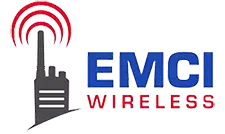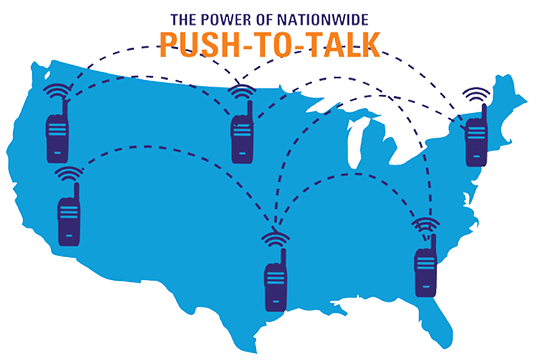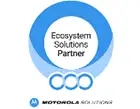Only three major carriers run cellular networks across the country. Evolving from a landline to cell phone to group video calling, these networks enable us to communicate across the country.
But did you know that Motorola’s WAVE operates on a nationwide LTE cellular network? It connects teams at the push of a button across different networks and devices. It eliminates the barriers between devices, networks and locations to let everyone be part of the conversation.
With the Motorola TLK 150 and 100, you get the convenience of a radio handset with the reach of a cellular network. In fact, the WAVE TLK Series two-way radios provide businesses with instant push-to-talk team communications over a nationwide LTE cellular network. This one bundled solution, including the radio, cellular service and software, is built specifically for the demanding needs of businesses with a geographically dispersed workforce.
Read on to learn about these devices and how they modernize business communication.
Motorola TLK 100 vs. Motorola TLK 150
The TLK 100 is a compact PTT handset that looks just like a traditional radio. With a 19-hour battery life, it’s designed to last more than an entire shift between charges comfortably. Its one-button design means it’s even compliant with driving laws, allowing it to be used on the road.
But it’s still a simple, screenless handset. That limits distractions on site and on the road. It has a classic radio design but with much more reach and many other benefits that we’ll get to in a moment.
By contrast, the TLK 150 is not just a handset. Instead, it is a mobile radio that can be mounted to a vehicle’s interior to be used on the road.
Just like the TLK 100, its PTT design complies with laws on distracted driving, so it’s safe for use on the road. And the wired connection means you’ll never have to search your vehicle to find the handset!
Unique Advantages of The TLK Network
So far, these two TLK models may sound like standard two-way radio systems. But they are leading the way in radio technology by connecting to Motorola WAVE PTX, learn about Wave on cloud.
Motorola’s unique network setup makes a simple handset far more powerful. Here are seven unique strengths of the system that revolutionize business communication.
1. Nationwide Connectivity
The one-button design of two-way radio systems is why they’ve been so popular across industries for decades. It’s simple to use, and communication is instantaneous.
This simplicity, however, comes at a cost—most notably range. Especially as cell phones hit the market, the limited range of a handheld radio became abundantly clear. Even the strongest radio networks couldn’t reach quite as far.
Motorola WAVE PTX addresses this issue by creating a network for radios that spans the country. Now, TLK 150s and 100s can communicate coast to coast, just like a cell phone.
Motorola has pulled this off by not limiting itself to the technology of the past. Instead of relying on radio waves, they’ve reimagined the whole radio process. Their radios aren’t connecting to radio signals but to a nationwide LTE cellular network!
With an integrated 4G SIM card, they connect to cellular networks to achieve nationwide reach. Except there’s no screen, dial tone, unlocking, or other time-wasting distractions that cell phones have!
2. One-to-One Communication
By reimagining the technology, Motorola has made other unique features possible. One of these is private communication via radio.
Typically, radios work on a one-to-all system. Each time someone presses the button to speak, the message plays across the network. But Motorola’s WAVE PTX is more advanced.
With the integration of smartphones and computers into the network, users can communicate one-to-one or one-to-talk group. They can narrow down who exactly will receive their message.
This design makes communication more effective and secure.
It allows users to have private conversations over a secure connection. Instead of switching to a cell phone, when you need to communicate one-to-one, you can use the radio network. This communication is faster than taking a cell call, keeping teams better connected.
Because of this unique network setup, multiple one-to-one calls can happen at the same time. It won’t clog up the radio, because the cellular network allows several users to take private calls all at once.
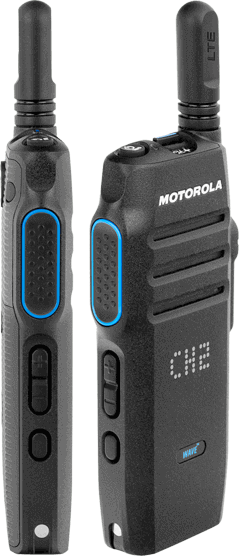
3. Clearer Communication
Communication is more effective when sound is crystal clear. Static, several types of interference, and other connectivity issues plague traditional radio handsets. This slows down communication, and if it leads to miscommunication, can actually be dangerous.
By connecting to the 4G LTE network, Motorola has designed, TLK handsets to avoid these classic radio pitfalls. Interference is never an issue, and all radio communication is just as clear as a phone call would be.
But even smartphones don’t get a flawless signal in every area.
Foreseeing this issue, Motorola didn’t just use one carrier for their 4G network. Instead, they connected with several across the country, defaulting to whichever is strongest in any given area. Regardless of where you are, the strongest local carrier will carry your voice as far as you need.
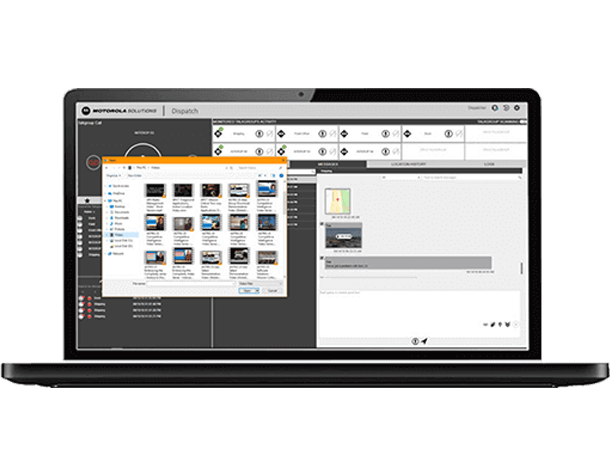
4. Multi-Platform Integration
We’ve mentioned already that TLK 150s and 100s can connect with computers and smartphones also linked to the network. Here’s how it works.
4G LTE is an internet system that allows other internet users to connect to it if permitted. To gain access, a user must either login to WAVE PTX Dispatch software on a computer or download the Motorola WAVE app. Both of these have incredibly diverse capabilities.
Think of all the powerful communication tools a smartphone has, such as:
- GPS tracking
- Map tools
- Text messaging
- Video calling
- File sharing
All of these are possible on the app and dispatch software. In fact, app users can even live-stream videos to other app users or those on the software. But there’s one more tool that integrates these modern tools with the radio handsets.
Both have a PTT button. That is a button that offers instant communication across the radio network as if you were using a traditional handset. So while those with TLKs cannot receive video files like those on a smartphone, they are connected to all app and software users.
Why is this so revolutionary? It means not everyone in your company needs their own handset. Those who use radio communication less often or less urgently can rely on the app or software to stay in touch with everyone.
This eliminates the divide between those with and without radios. Instead, everyone on a team can be part of the same conversation.
5. GPS Tracking
All dispatch software and apps have access to powerful map tools to share location files and live locations and to check upcoming routes. They can also see other users on the maps to help with effective logistics. This includes those using TLK 150s and 100s because they, too, have GPS tracking installed.
Despite their lack of screen and simple PTT functionality, the handsets have their own location trackers. Therefore, they come up on dispatchers’ maps, allowing their team members to follow their location.
This simple feature saves time when communicating locations; especially useful in an emergency. And in less urgent situations, it lets dispatchers help those on the road to find the best routes ahead of them.
6. Affordability and Flexibility
Unlike other radio systems, barely any setup is required on the users’ end. This translates to no upfront cost, as the whole system runs on a subscription basis.
Tell your provider how many physical handsets, apps, and software subscriptions you need. Then, they’ll build a customized quote for a monthly fee that covers your requirements.
And the system is completely scalable; whenever you wish to add or remove devices, you can do so. Adjust your communication as needed while protecting your cash flow and flexibility.
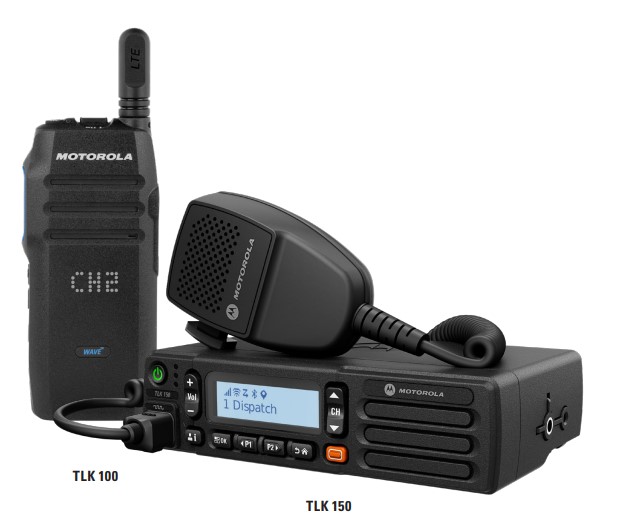
7. Long-Lasting Design
Did you know that every single second, two smartphone screens crack in the US? The more communication technology advances, the more delicate it seems to become!
This is not the case with Motorola TLK 150 and 100. Despite their revolutionary connectivity, the hardware is as durable as a traditional rugged handset.
Typical wear and tear, from dust to drops, won’t have an impact. Use your TLK as worry-free as you would an old-fashioned radio while connecting across the country.
Work With Motorola’s Highest-Tier Partner
The Motorola TLK 150 and 100 have all the resilience of a traditional radio handset. But they’re equipped with the technology to streamline your business communications.
EMCI Wireless is one of Motorola’s highest-tier partners for all things radio. We provide one of the most competitive subscription services for WAVE PTX. We don’t just help you set up; we keep your systems and tech connected and up to date.
Get in touch with us today to discuss your business communication needs. We’ll design the exact subscription you need to take care of all your teams.
